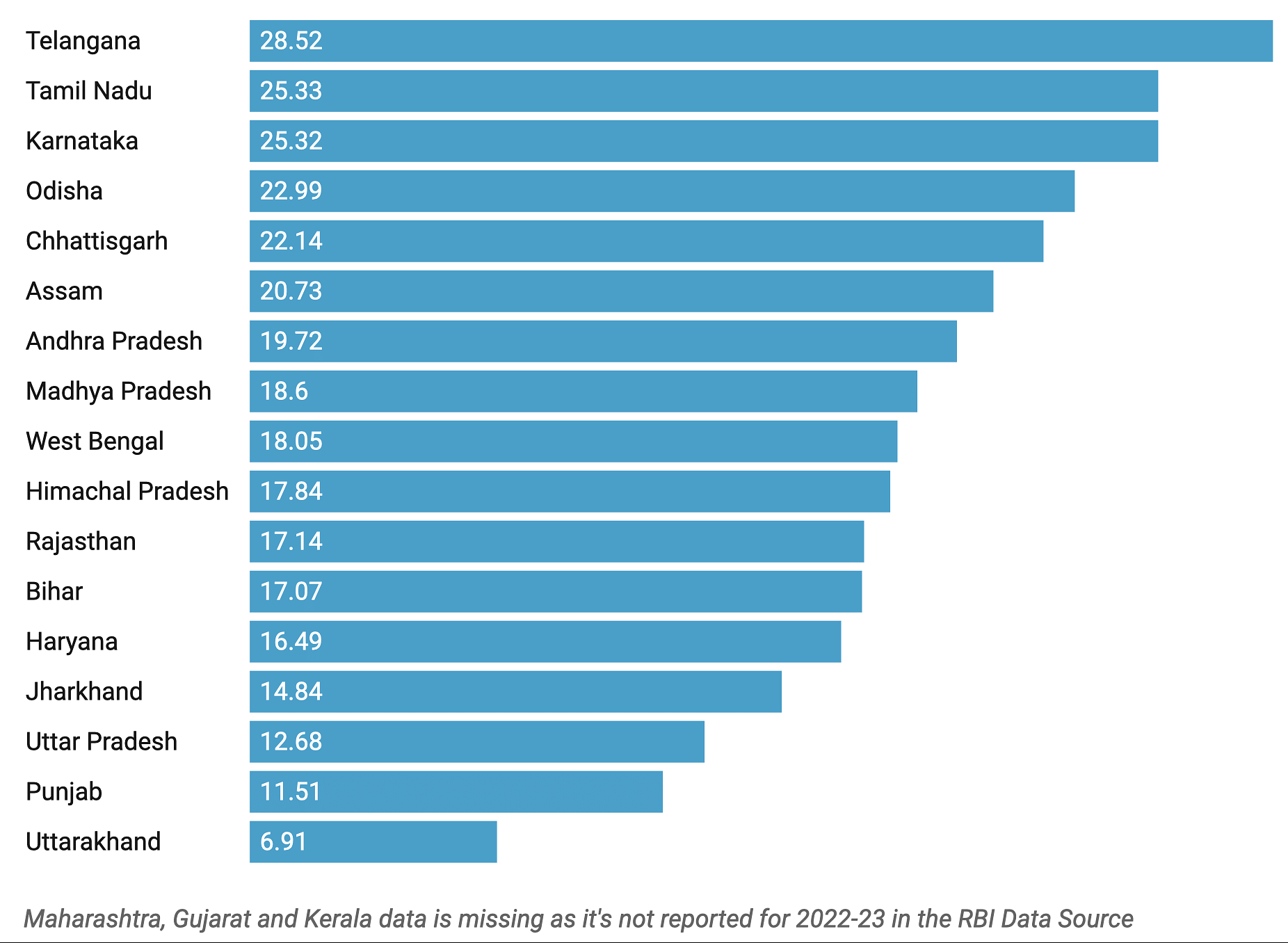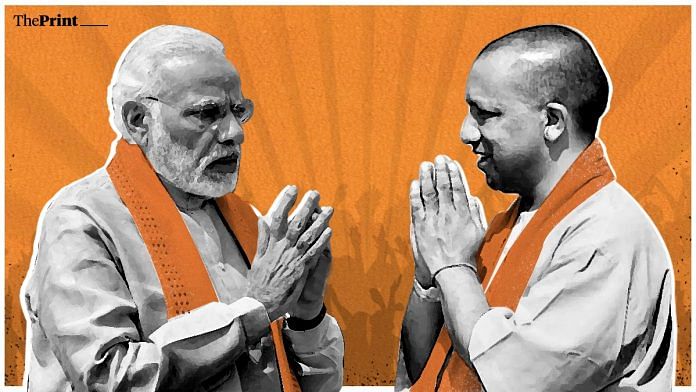One of the principal rhetorical points that the BJP employs in assembly elections is the idea of a ‘double-engine sarkar’. The implication is that the same party in power both at the Centre and in state will enhance policy alignment and bring growth dividends to citizens of that state. Various versions of the same rhetoric have been employed by other political parties as well. The first question is whether it’s a legitimate argument in theory. Secondly, regardless of the slogan’s philosophical rectitude, is there any evidence of such ‘double-engine’ governments actually delivering higher growth?
Governments, once they are formed, do not belong to or represent political parties. They represent people; all people. And that, presumably, was the most basic and obvious concept in our system of government. One that required no explanations. But political parties have a knack of obfuscating the obvious; so reasonable people end up spending their political energy on restating the basics instead of making arguments on complex policy choices.
In an ideal world, states elect their governments. This government makes policy choices at the state level while the Union government makes policy choices at its national level. Both have well-defined roles and an absence of hierarchy between these levels of jurisdiction. And they communicate with each other, when required, as legitimate governments that are not beholden to each other in any way.
What the claim of ‘double-engine sarkar’ does is that it corrupts this equilibrium, which is the bedrock of federalism. For instance, will the Union make a preferential policy that benefits only those states that elect BJP at both levels? If that’s the case, then the policy will come at the expense of states that don’t elect BJP, since domestic policy-making is a zero sum game at the Union level. Or, does the claim of ‘double-engine sarkar’ implicitly mean that the state government will opt for policy choices that the Union approves of or, worse, demands? This subverts the legitimacy of the state government, reducing it to a glorified bureaucracy. Whatever the case, the independence of each layer of government, a cornerstone of a modern liberal democracy that’s based on checks and balances, is threatened by the ‘double-engine’ claim.
Also read: BJP’s ‘double-engine’ pitch sells development but UP still lagging. See these indicators
But does it offer growth at least?
People who are struggling with basic requirements, though, are probably willing to trade the philosophical rectitude off for a materially better life. After all, who would refuse the basics in life to sit on a high horse? So, the question then becomes: does the ‘double-engine sarkar’ achieve its claim of better growth, at the least?
The most obvious promise in the slogan is economic improvement in the lives of people. And, therefore, the metric to check if this is true is the per capita state net domestic product. After all, this is what people see in their lives; and if they are making compromises on their political dignity and structure by buying the ‘double engine’ claim, at least the rate of change in per capita state net domestic product should be greater in states with the said ‘double-engine sarkar’.
5-year absolute growth per capita: 2017-18 to 2022-23 (in %)
RBI data at constant prices for base year 2011-12

The data, however, reveals no correlation between economic growth and the governments. If anything, it shows states with governments formed by a different political party at the state level do slightly better. The trend reveals that, in general, relatively well-performing states that are on a trajectory of growth do well. And states that aren’t, don’t. Telangana, Tamil Nadu, and Karnataka, for example, are all states with good governance regardless of the political party in power. They are also the states with the best per capita growth rates across the five-year period from 2017-18 to 2022-23.
What is tragic from the chart above is that India’s largest state, Uttar Pradesh, despite being a poor state with a per capita net domestic product of a mere Rs 47,066 (at constant prices for 2011-12) is at the bottom in terms of its ranking in growth as well. Telangana’s average citizen, who is 3.5 times richer than the average citizen of Uttar Pradesh, grew richer at twice the rate compared to his Uttar Pradesh counterpart for the five-year period between 2017-18 and 2022-23. Poor states around the world typically grow faster than rich ones owing to a low base effect. But Uttar Pradesh’s citizens growing at rates far below the national average, despite being poor and having a low base effect, is a tragic tale. Significantly, Uttar Pradesh has had a ‘double-engine sarkar’ of the BJP throughout this period.
To be sure, Haryana and Punjab, two relatively well-off states, also grew at below par rates. Haryana had the ‘double-engine’ government and Punjab did not. While citizens of both these states must demand better from their respective state governments, it’s not a tragedy if their already prosperous citizens are growing slower than the national average. On the other hand, in Uttar Pradesh, a state with per capita GSDP worse than many countries in sub-saharan Africa, such low rates spell disaster.
So, when politicians come around next time claiming that electing a ‘double engine’ government is good for growth, citizens should probably ask why these engines are often pulling them in opposite directions, whether politicians really know what results in growth, and why India has this strange problem where the richer states grow faster than poorer states regardless of who forms the government. Isn’t the purpose of having a fiscal Union achieving convergence among the various stakeholders in terms of their economic status? So why is India doing the opposite then? Clearly, a ‘double-engine sarkar’ slogan isn’t bothered with such questions.
Nilakantan RS is a data scientist and the author of South vs North: India’s Great Divide. He tweets @puram_politics. Views are personal.
(Edited by Prashant)




Add this to this article.
UP receives highest per capita aid from centre, more than even poorer Bihar.
Single engine governments do have some handicaps but they overcome it in their own way. Some variables that have helped southern states is better rule of law, better social trust, better harmony.
Data reveals no correaltion because The Institutions that make states special are already in place and BJP courtesy of being beholden to its populist credentials have been slow to push for industrial development policies. Remember the “Suit boot ki sarkar” bull s. India needs aggressive industrial dev. and that means as a base prereq you need the Central and state govt to tbe on the same page. The problem in India is elections and the resulting anti incumbency disrupting development priorities. Crowing for “liberal democarzy” like your avg
disassociated Californian liberal waylays the reality of what p155 poor nations NEED, intelligent, concerted, coordinated and concentrated decision making authorities, WHO were HISTORICALLY decidedly very non liberal.
Imperial Japan(and later under LDP), Imperial Germany(Bismarck is the easiest example), S.Korea under Park Chung He(Trained by the IJA), Singapore under PAP(party that follows a leninist model of org, PAP oligarchy was forged in brutal environment), Taiwan under Kuomintang(Had a leninist revival post losing the mainland; under Chiang Ching Kuo and Li kwoh ting’s leadership to be specific the former of whom was ironically a trained communist in his early years), even cognitively challenged Mao and his revolutions were instrumental in decapitating(pun intended) local/regional elites which allowed for the effective implementation of the writ of Central Govt during Deng’s reforms(so when they opened up the regional leadership even as it exercised relatively independence in policy executions was in lock step with the central authority in terms of priority), This is as opposed to what happened in post soviet Russia.
So, You can kindly take your western liberal f3ti5hes, shove that up your nether regions and go back to the damp hole you crawled out of.
Federalism f3t1sh is the reason why India is damn dysfunctional. The 7th schedule is emblematic of all that is wrong with Federalism in general and India in specific. As for “Liberal Democracies” You have to be a disassociated smooth brain to argue for the promotion of liberal democracies when the most successful industrial states(Cast your mind back) attained their technological and scientific prowess under Explicitly less than democratic governance models. Regarding the “double engine” model, Its got strong precedence that it can work(Tamil Nadu and Maharashtra’s industrial dev was kicked off by regional govts taking ind. dev seriously) govt was kicked off by Congress in the 60s and 70s, But it ultimately comes down to policy execution(Which is better under NDA) and what this insufferable writer refers to as glorified bureaucracies are exactly what they should be and what India needs, Our bureaucracies are process oriented not outcome oriented like in South Korea, China, Japan, Singapore and Taiwan.
India needs extraordinary levels of centralization and concentration of power in the Executive.
In China The Central government started from a position of hyper centralization and slowly and steadily ceded control and authority as it saw fit. But In India The central govt is fundamentally weak. For example the Chinese Govt have Cities that are referred to as directly administered municipalities where the central govt can directly execute its policies, Beijing, Tianjin, Shanghai, and Chongqing. All four of them are Industrial and Financial Powerhouses. For instance Shanghai Municipal Govt funded SMICs initial fabs and Given that Shanghai is a directly administered municipality I invite you to draw your own conclusions.
Parasitic and shortsighted liberal western ideologues like to pleasure themselves on their insufferable and disassociated moral superiority, Indians have more greater concerns to address these egg heads should be gagged with extreme prejudice.